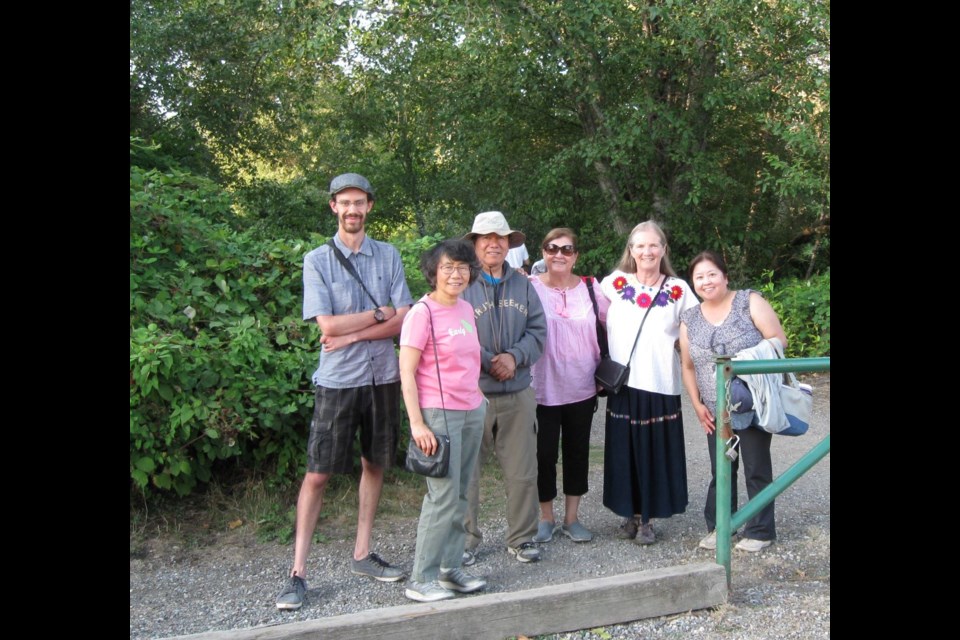Last week scary news was pushing summer out through season’s door.
It was revealed that North America’s breeding bird population had decreased by nearly 30 per cent since 1970 – that’s 2.9 billion birds lost in 50 years. The greatest decrease was among the common species. Larks were down by 67 per cent, followed by blackbirds, sparrows, warblers, finches, swallows and thrushes. Scientists involved in the research put most of the blame on habitat loss.
In August, the Garden City Conservation Society organized a bird walk in Garden City Park, led by Brendan Toews of Bird Studies Canada. I’d passed that park – situated at the corner of two busy streets, Garden City Road and Granville Avenue – countless times, but never had any idea what lay beyond the perimeter. Its nearly 24 acres include trails through an area filled with diverse plants, bushes and trees growing in a natural state, where birds thronged. In 80 minutes we covered one kilometre and observed 21 species. There were many Canada geese, mallard ducks and crows, of course, but also birds that I’d not noticed before in Richmond – the orange-crowned warbler, yellow warbler, black-throated grey warbler and Bewick’s wren. For me, the most delightful moment was when I saw many baby bushtits, squeezed together in a row, sitting on a branch.
Garden City Park is now surrounded by townhouses and condos, but I remember sixty years ago coming to this part of town with my mother to pick daffodils growing around a derelict bungalow on a huge lot. So, yes, there’s been a lot of habitat loss in the area, but the park offers some refuge, and nearby are two further, vitally important green spaces filled with native vegetation – the huge Garden City Lands and Paulik Park, a hidden gem on Heather Street, both, like Garden City Park, owned by the City of Richmond.
On my street, my yard is likely to be the most biodiverse one. I’m exultant (from the Latin exultare, to rejoice — literally to leap, as in leap for joy) every time I hear chirping in my backyard. In the spring, the hawthorn turns into a series of open-air stages, with birds auditioning, rehearsing and broadcasting, all at once. In summer it’s quieter, but now in the cooler weather they’re noisy and frisky again. Finches arrive en masse to feast on the seeds of melissa and giant evening primrose. Black-capped chickadees flit back and forth, and when they sit still they sing a couple of notes that sound like “Sweetheart.” But my yard shouldn’t be the only haven for birds around here, where old houses are being torn down and replaced by mansions on concrete platforms. This has to change. Let’s stop altering the face of the earth!
We need to start repairing the damage right now, before it’s too late. Or are we going to wait for another signal that we’re destroying the planet – are we going to wait until the bird population is reduced by 60 or 90 per cent?
Sabine Eiche is a writer and art historian



